Best Kotlin Reflection Books to Buy in November 2025
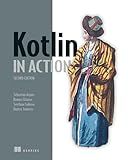
Kotlin in Action, Second Edition


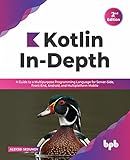
Kotlin In-Depth: A Guide to a Multipurpose Programming Language for Server-Side, Front-End, Android, and Multiplatform Mobile (English Edition)


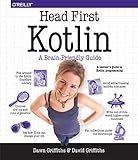
Head First Kotlin: A Brain-Friendly Guide


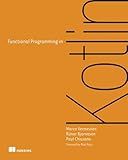
Functional Programming in Kotlin


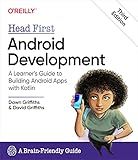
Head First Android Development: A Learner's Guide to Building Android Apps with Kotlin



Kotlin Programming: Learning Guide Covering the Essentials and Advancing to Complex Concepts


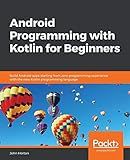
Android Programming with Kotlin for Beginners: Build Android apps starting from zero programming experience with the new Kotlin programming language


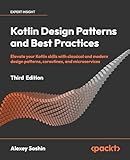
Kotlin Design Patterns and Best Practices: Elevate your Kotlin skills with classical and modern design patterns, coroutines, and microservices


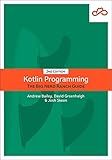
Kotlin Programming: The Big Nerd Ranch Guide (Big Nerd Ranch Guides)


In Kotlin, nullable fields can be reflected using the KProperty1 interface. This interface represents a property, whether it is nullable or not. When reflecting nullable fields, we use the returnType property of KProperty1 to determine if the field is nullable.
To reflect nullable fields, follow these steps:
- Obtain the KClass of the class containing the nullable field. This can be done using the ::class property on an instance of the class or directly on the class name.
- Use the memberProperties property on the KClass to get a list of all the properties defined in the class. This returns a collection of KProperty1 instances.
- Iterate over the properties using a loop or any other iteration technique.
- For each property, access its returnType property and check if it is nullable by using the isMarkedNullable property. If isMarkedNullable returns true, it means the field is nullable.
- Perform any necessary operations or logic based on the presence of nullable fields.
Here's an example code snippet that reflects nullable fields in Kotlin:
import kotlin.reflect.KClass import kotlin.reflect.full.memberProperties
data class Person(val name: String, val age: Int?, val address: String?)
fun main() { val personClass: KClass = Person::class val properties = personClass.memberProperties
for (property in properties) {
if (property.returnType.isMarkedNullable) {
println("Nullable field: ${property.name}")
}
}
}
In this example, we have a Person data class with three fields: name, age, and address. The age and address fields are nullable. By reflecting the Person class and iterating over its properties, we can identify and print the names of the nullable fields.
What is the safe cast operator in Kotlin and how to use it with nullable fields?
The safe cast operator in Kotlin is denoted by the as? keyword and it allows you to safely cast an object to a nullable type. It returns null if the cast is not possible instead of throwing a ClassCastException.
You can use the safe cast operator with nullable fields as follows:
val obj1: Any? = "Hello" val obj2: Any? = 123
val str1: String? = obj1 as? String // Safe cast, returns "Hello" val str2: String? = obj2 as? String // Safe cast, returns null
In the example, obj1 is cast to a String using the safe cast operator, resulting in a non-null String reference. However, obj2 cannot be safely cast to String, so the safe cast operator returns null.
It is important to note that the safe cast operator can only be used with nullable types (Any?). If you try to use it with a non-nullable type (Any), a compile-time error will occur.
What is the difference between safe call and non-null assertion operators in Kotlin?
In Kotlin, the safe call operator (?.) and the non-null assertion operator (!!) are used to handle nullability.
- Safe Call Operator (?.): This operator is used to safely access properties or invoke methods on nullable objects. It ensures that the code only executes if the object is not null. If the object is null, the expression will return null instead of throwing a NullPointerException. The safe call operator can be used like this: nullableObject?.property or nullableObject?.method().
Example:
val name: String? = getNullableName() val length: Int? = name?.length
In the above example, if name is null, the length will also be null.
- Non-null Assertion Operator (!!): This operator is used to assert that an expression is not null. It is used to instruct the compiler not to throw a NullPointerException even if the object is null. If the object is null, the non-null assertion operator will throw a NullPointerException in runtime. The non-null assertion operator can be used like this: nullableObject!!.
Example:
val name: String? = getNullableName() val length: Int = name!!.length
In the above example, if name is null, a NullPointerException will be thrown at runtime.
It is generally recommended to use the safe call operator (?.) whenever possible, as it provides safer and more concise code. Non-null assertion operator (!!) should be used with caution, as it can lead to NullPointerException if not used properly.
What is the difference between lateinit and lazy initialization with nullable fields in Kotlin?
The main difference between lateinit and lazy initialization with nullable fields in Kotlin lies in how and when the initialization is done.
- lateinit: Used for non-null properties that are initialized later. A property declared with lateinit must be of a non-null type. It postpones the initialization of the property until you explicitly assign a value to it. Uninitialized lateinit properties will cause UninitializedPropertyAccessException if accessed before being assigned a value. The lateinit property must be mutable (var). Example: lateinit var name: String
- Lazy initialization with nullable fields: Used for nullable properties that are lazily initialized. A property declared with lazy initialization must be nullable. It initializes the property only when it is accessed for the first time. The initialization is done only once and the same value is returned for subsequent accesses. The property can be either mutable (var) or immutable (val). Example: val name: String? by lazy { "John" }
In summary, lateinit is used for non-null properties that are initialized later and requires an explicit assignment, while lazy initialization with nullable fields is used for nullable properties that are lazily initialized when accessed for the first time.
What is the purpose of the "let" scope function when working with nullable fields in Kotlin?
The "let" scope function in Kotlin is used to safely perform operations on nullable fields or to execute a block of code if the nullable field is not null. It helps in avoiding null pointer exceptions and making the code more concise and readable.
The primary purpose of "let" is to perform some actions or transformations on a nullable object only when it is not null. It takes the form of a lambda function and is invoked on a nullable type. If the object is not null, the lambda function is called with the object as its argument, providing a non-null reference to work with. This allows you to handle the null case separately or perform operations on the non-null object without worrying about any nullability issues.
Here's an example to illustrate its usage:
val nullableValue: String? = "Hello, Kotlin"
nullableValue?.let { // Executed only if nullableValue is not null val length = it.length println("Length of the string: $length") }
In the above code, the lambda function inside "let" is only executed if nullableValue is not null. Within the lambda function, the non-null reference it is used to access the properties or perform operations on the object. If nullableValue is null, the lambda code block is not executed, preventing any null pointer exceptions.
This construct provides a safer and more concise way of working with nullable fields, reducing the need for explicit null checks and improving the overall readability of the code.
How to define a nullable parameter in a Kotlin function?
In Kotlin, you can define a nullable parameter in a function by using the question mark ? after the parameter type.
Here's an example:
fun processInput(input: String?) { if (input != null) { // perform some operations with the non-null input println(input.length) } else { // handle null input println("Input is null") } }
In the above example, the input parameter is defined as String?, which means it can accept a String value or null. Inside the function, you can check if the parameter is null or not to appropriately handle the null case.
What is a nullable field in Kotlin?
In Kotlin, a nullable field is a field that can hold a null value. By default, variable declarations in Kotlin do not allow null values. However, if you need to explicitly allow null values, you can add a question mark (?) after the type declaration.
For example, a nullable field can be declared as follows:
var name: String? = null
In this case, the "name" field can either hold a valid String value or be null. By allowing null values, you can handle cases where a value may be absent or unknown. But it also requires additional null safety checks to prevent NullPointerExceptions when accessing the field.
